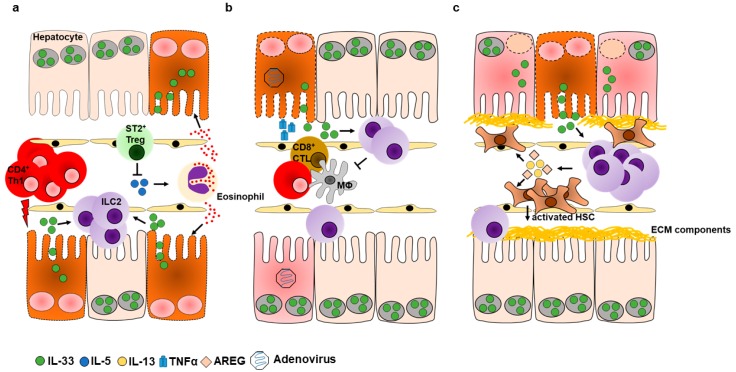Figure 3.
ILC2s have a paradoxical role during acute liver inflammation and promote hepatic fibrogenesis in response to chronic liver injury. (a) hepatic ILC2s expand in response to hepatocyte-derived IL-33 during acute immune-mediated hepatitis and amplify inflammation by IL-5-dependent recruitment of eosinophils. Exacerbated necrosis of hepatocytes and ongoing IL-33-release during acute inflammation induces IL-33-responsive Tregs that might limit the activity of ILC2s. (b) Adenoviral infection induces TNFα in anti-viral macrophages (MΦ), CD4+ Th1 cells, and CD8+ cytotoxic T lymphocytes (CTL), thereby promoting the release of IL-33 from dying hepatocytes and activation of ILC2s. Expanded ILC2s limit function of anti-viral immune cells to prevent enhanced loss of hepatic tissue. (c) Ongoing necrosis in response to chronic liver injury renders constitutive activation of hepatic ILC2s to release IL-13 and AREG, which activate hepatic stellate cells (HSCs). Following activation, HSCs transform into myofibroblasts that promote liver fibrosis by depositing extra-cellular matrix (ECM) components.

